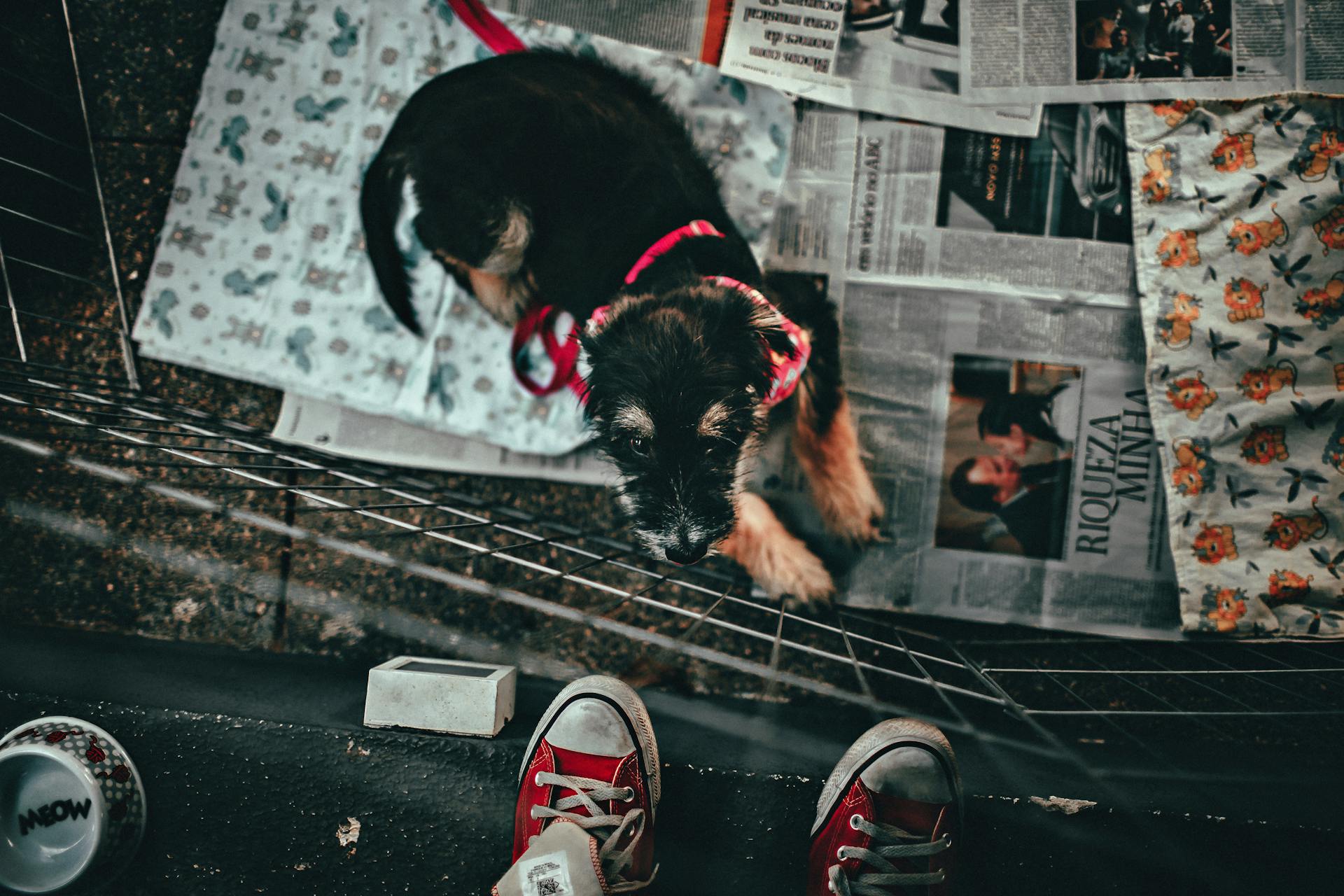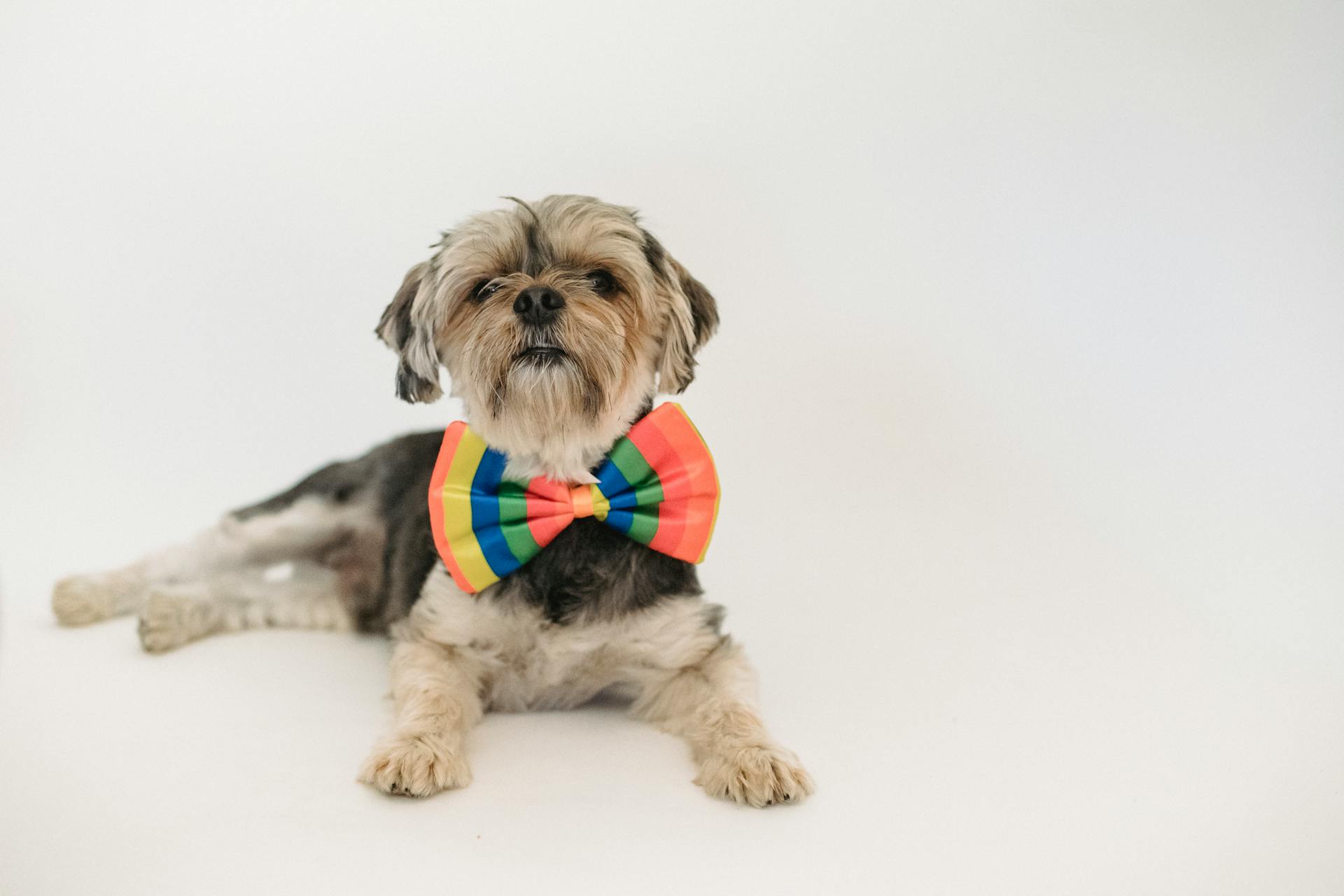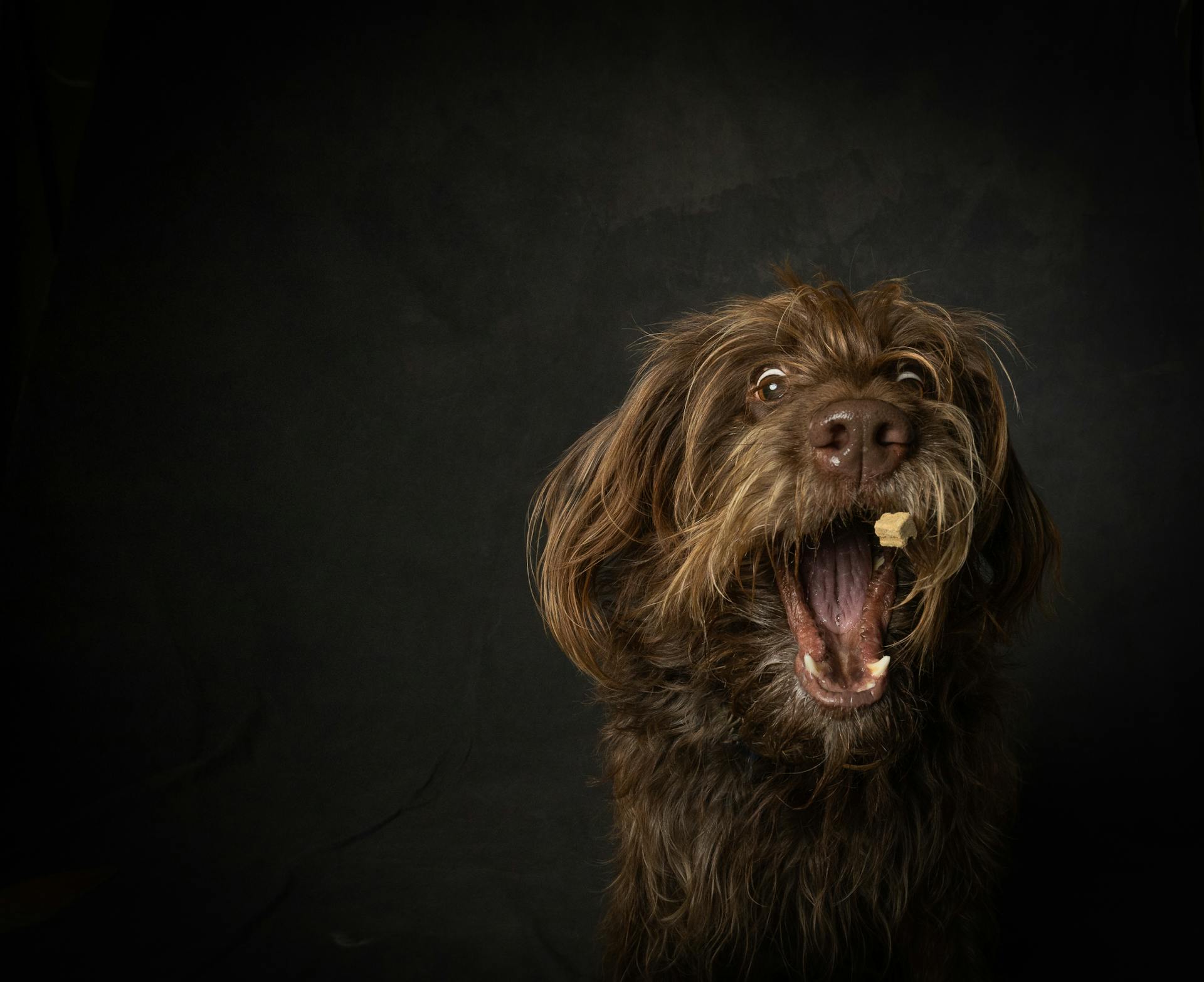
As a Havanese owner, you're probably aware that your furry friend's coat can change color over time. This is a normal process, and it's essential to understand what causes it and how to care for your Havanese during this transition.
The color change in Havanese dogs is primarily due to the fading of the black pigment, eumelanin, which can lead to a lighter coat color.
Havanese dogs typically start showing signs of color change around 2-3 years of age, although it can occur earlier or later in life. Factors such as genetics, diet, and exposure to sunlight can influence the timing and extent of the color change.
A Havanese's coat can change from black to fawn, cream, or even a combination of these colors. The exact shade and pattern will depend on the individual dog's genetics and breeding history.
Consider reading: Black Mouth Cur Dog Shedding
Havanese Coat Changes
Havanese puppies have soft, downy coats that change as they age. These coats are thinner and softer than their adult counterparts.
As they mature, Havanese puppies can change color, with some dogs gradually lightening from black or dark gray to silver over several months to years. This is most noticeable in dogs with the silver gene.
Some Havanese puppies will noticeably shed before their adult hairs come in, while others will simply gain the adult hairs in addition to their puppy ones. This evolution is usually when a change of color happens.
A Havanese's adult coat will continue to change as it ages, often losing luster and appearing dull. Just like humans, dogs go gray as they get older, and some may experience hair loss.
Here are some common markings or points that a Havanese might have:
- White markings
- Cream markings
- Silver markings
- Silver points
- Parti-color (more than 50% white with patches or spotting in another color)
- Tan points
- Irish pied (two colors, more than 50% of the coat in a color that isn’t white)
- Parti belton (a white coat with flecking caused by the ticking gene)
Havanese Coat Colors
Havanese Coat Colors can be quite varied, with some dogs having specific markings or points in addition to their main coat color.
Havanese puppies can have a range of coat colors, including white, cream, silver, and tan points. They can also have specific markings like Irish pied or parti-color, where more than 50% of the coat is in a color other than white.
Some Havanese coat colors can change as the dog matures, with puppies born black or dark gray gradually lightening over several months to years. This is particularly noticeable in dogs with the silver gene.
Here are some examples of Havanese coat colors that can appear in puppies:
- White markings
- Cream markings
- Silver markings
- Parti-color (more than 50% white with patches or spotting in another color)
- Tan points
- Irish pied (two colors, more than 50% of the coat in a color that isn’t white)
- Parti belton (a white coat with flecking caused by the ticking gene)
Some coat colors, like clear red, can range from blonde to gold, orange, or darker reddish orange, and may darken significantly as the dog matures.
Black 7
The black Havanese dog is a standout in the breed, and one of its most interesting characteristics is its consistency in color as it matures.
Unlike some other coat colors, black Havanese dogs will not change color as they grow older, with the exception of those with the silvering gene, which will lighten to a silver color on the black parts.
The black Havanese's coat color remains relatively unchanged, making it a unique and appealing choice for many owners.
Here's an interesting read: Will a Hearing Aid Battery Kill a Dog
This consistency is quite different from other coat colors, such as silver or sable, which can change significantly as the dog matures.
In fact, black Havanese dogs are often considered to be one of the most consistent coat colors in the breed, with most owners reporting no significant changes in their dog's color as it ages.
Here are some key facts about the black Havanese coat color:
- Black Havanese dogs will not change color as they grow older, with the exception of those with the silvering gene.
- The silvering gene will cause the black parts of the coat to lighten to a silver color as the dog matures.
Fawn
Fawn Havanese dogs are darker than cream and appear more beige or dark blonde in color.
Their coat color can range from pale to vivid and intense, with some dogs having a truly shining beige-like shade.
Puppies with fawn coloration are sure to darken or lighten with time.
Many fawn Havanese dogs can be just as pale as the average fawn sable dog.
Their black nose is a distinctive feature that complements their fawn coat color.
Gold
The Gold Havanese is a stunning color variation. Their coats are a beautiful golden hue, with some areas taking on a darker golden shade, like the head and ears.
This color variation is consistent throughout the body, and while it may lighten, the golden color won't disappear.
Dogs with a full gold shade typically have black noses, adding a nice contrast to their coat color.
Silver and White
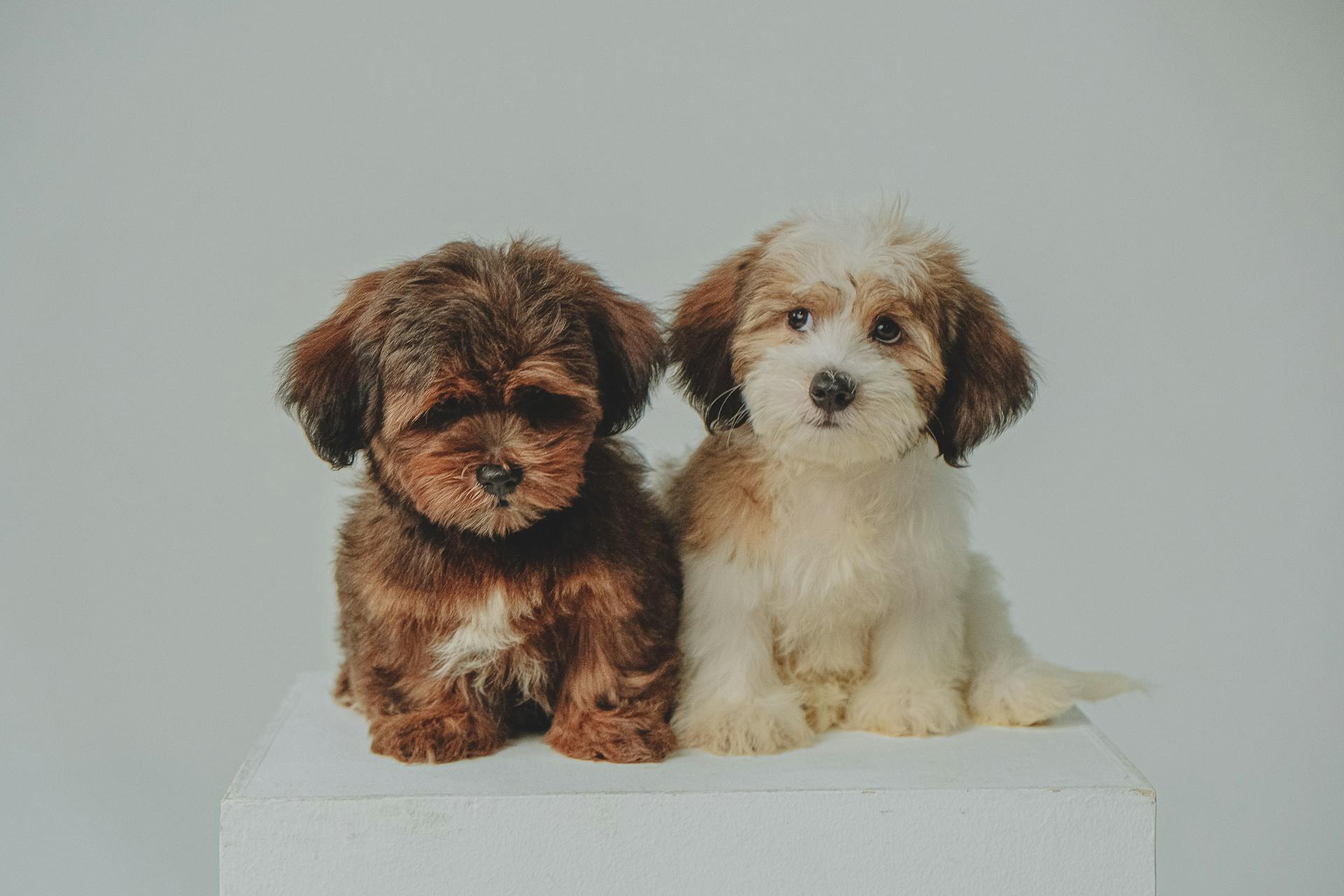
The silver and white Havanese is a unique variation that's sure to turn heads. This breed boasts a coat that's covered in a silver-gray color with speckles of white throughout, giving it a salt-and-pepper appearance.
The silver and white Havanese is a rare find, and its coat is truly eye-catching. The distribution of colors is what makes this breed so special, and it's a big part of what makes Havanese owners love them so much.
In some cases, the white fur may even cover as much of the body as the silver hair does, making this breed look like a true showstopper. The white fur can cover the face, chest, limbs, and neck, adding to the breed's overall charm.
Here's a breakdown of the silver and white Havanese's coat colors:
The silver and white Havanese's coat is truly one-of-a-kind, and it's a big part of what makes this breed so beloved by many.
Havanese Markings
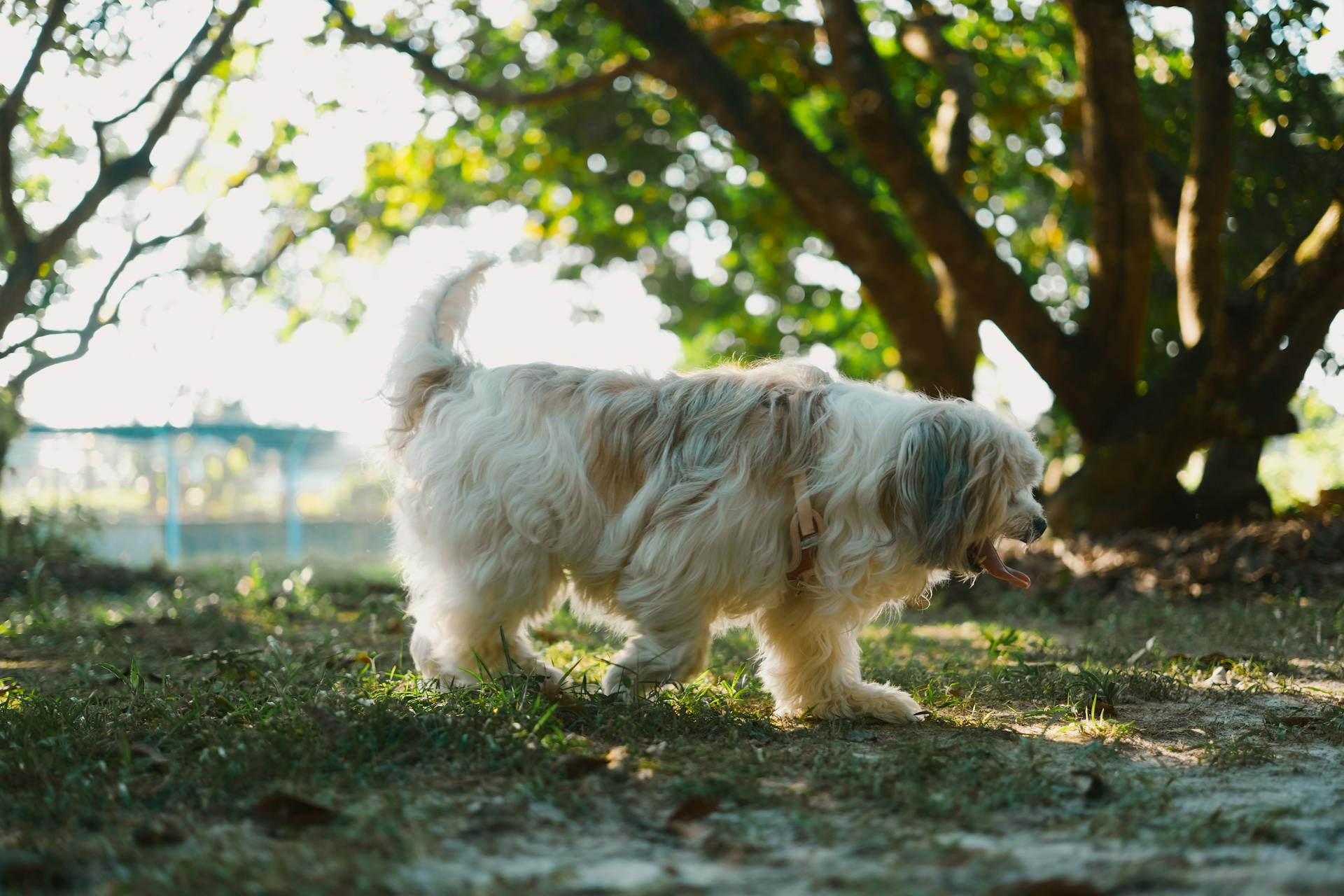
Havanese dogs can have a variety of markings, including white, cream, silver, and tan points.
These markings can appear in various locations on the dog's body, such as the head, muzzle, cheeks, chin, chest, feet, tail, and inner ears.
Some Havanese dogs have white markings, while others have cream or silver markings that can be subtle and difficult to distinguish from white.
Silver markings, in particular, can be so soft and shiny that they can be mistaken for white markings, but they will appear closer to gray when viewed in good light.
Cream markings often cover a limited area, such as the face, ears, paws, or neck, and can vary in color from dark tan-like to pale and yellowish.
Here's a list of common Havanese markings:
- White markings
- Cream markings
- Silver markings
- Silver points
- Parti-color (more than 50% white with patches or spotting in another color)
- Tan points
- Irish pied (two colors, more than 50% of the coat in a color that isn’t white)
- Parti belton (a white coat with flecking caused by the ticking gene)
As Havanese puppies grow and mature, they can change color, with some dogs developing additional colors or patterns in their adult coat.
This is particularly noticeable in dogs with the silver gene, where puppies born black or dark gray gradually lighten over several months to years.
Suggestion: Havanese Puppies Adoption
Frequently Asked Questions
What is the most popular Havanese color?
The most common Havanese coat color is black, which can appear alone or combined with other colors such as silver or tan.
Featured Images: pexels.com
